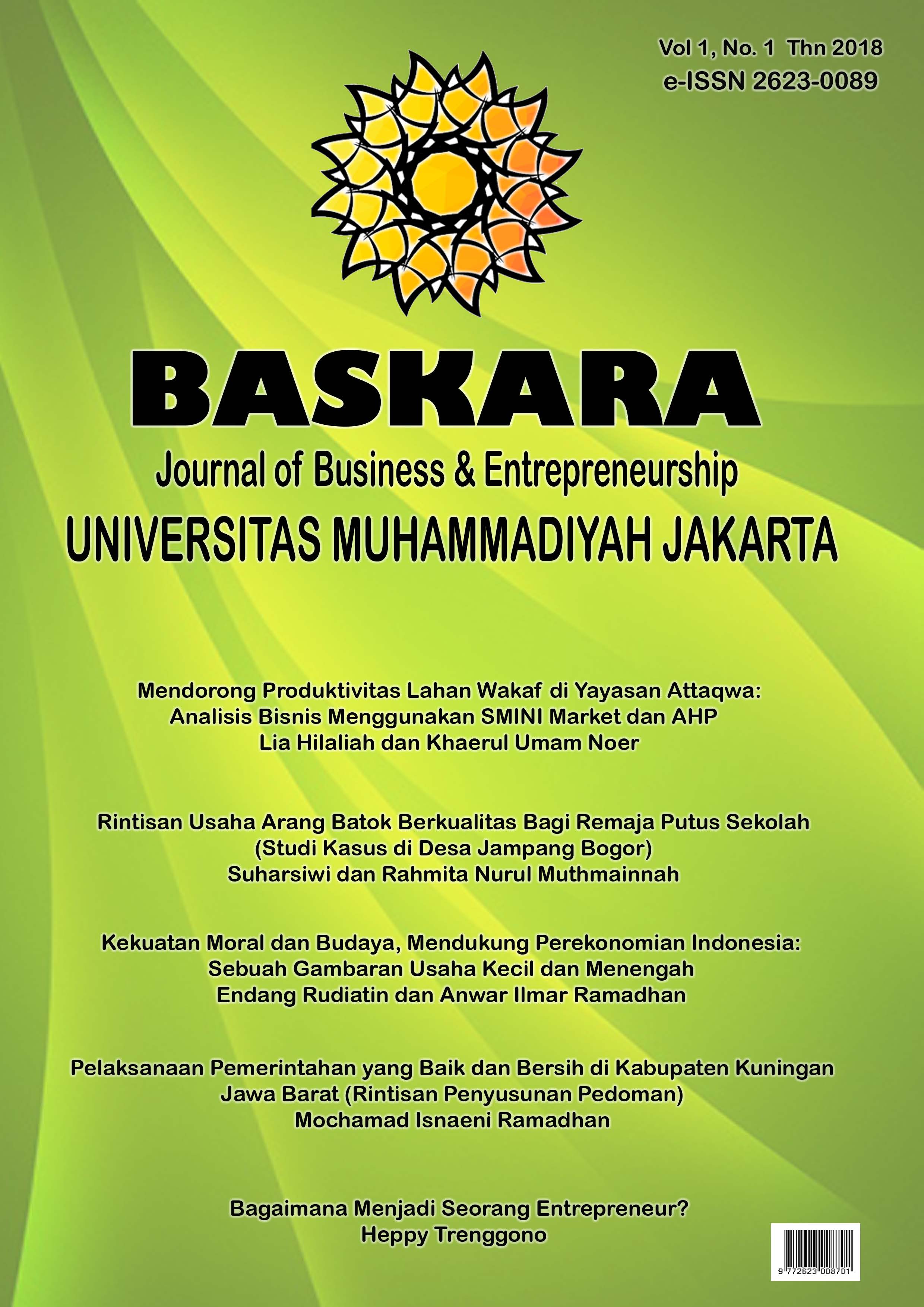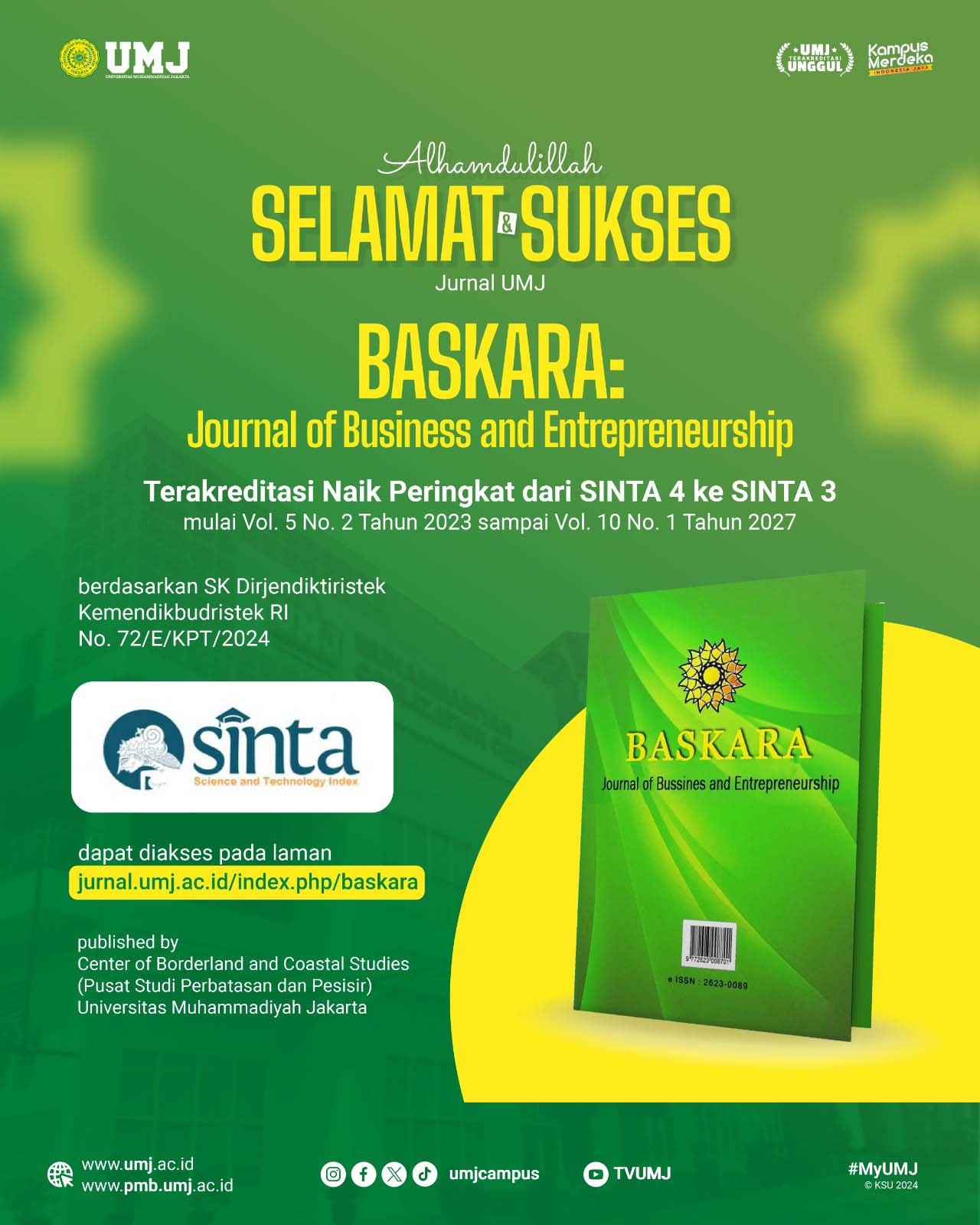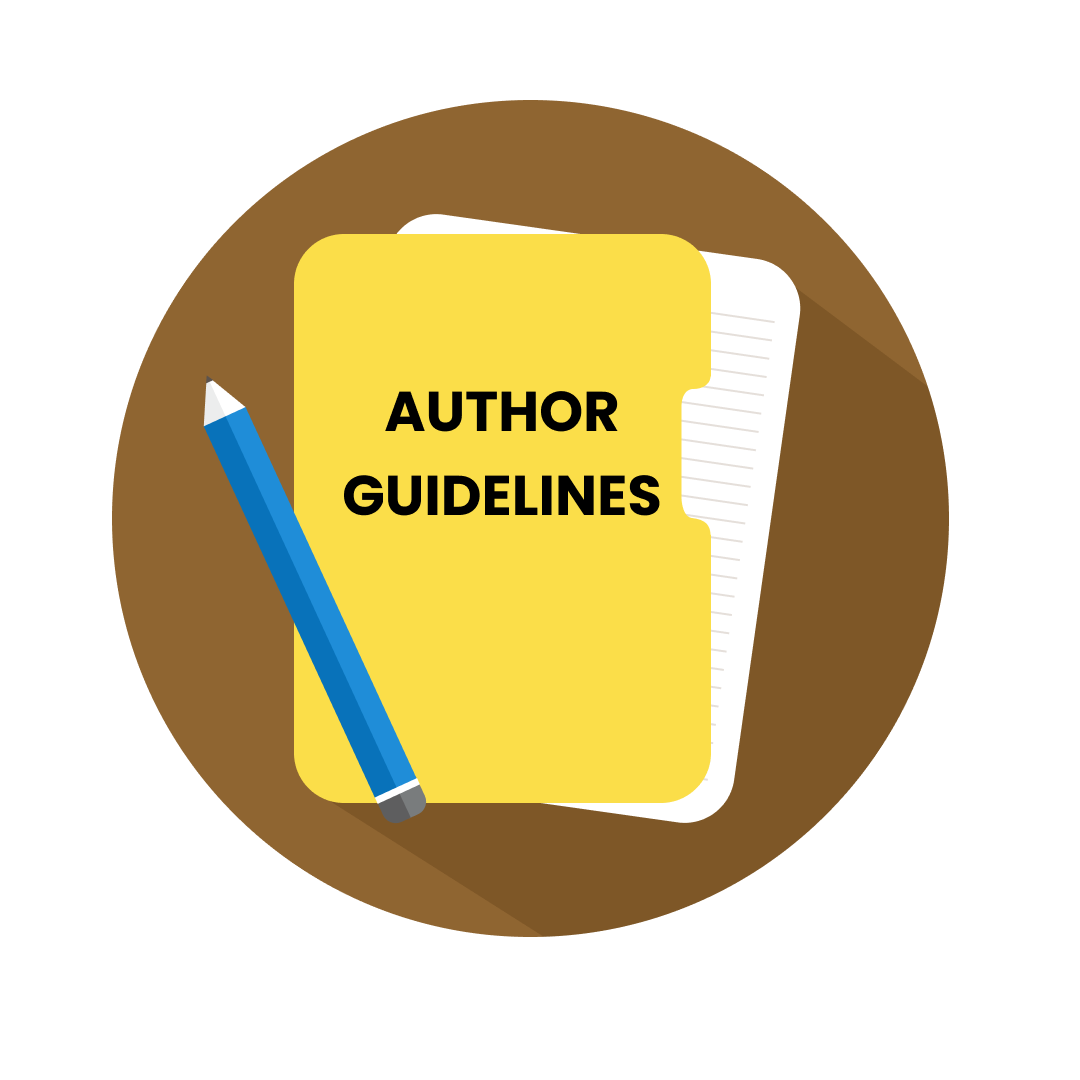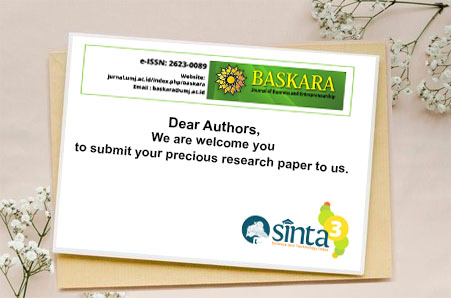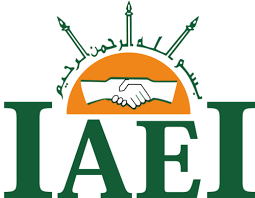Mendorong Produktivitas Lahan Wakaf di Yayasan Attaqwa: Analisis Bisnis Menggunakan SMINI MARKET dan AHP
DOI:
https://doi.org/10.54268/baskara.v1i1.5289Abstract
Dengan jumlah penduduk muslim terbesar di dunia, Indonesia memiliki potensi yang luar biasa dalam wakaf. Badan Wakaf Indonesia mencatat bahwa jumlah wakaf di Indonesia mencapai 435,768 tanah di Indonesia dengan jumlah area 4,359,443,170 m2 yang dikelola oleh wakif, salah satu wakif adalah Yayasan Attaqwa. Yayasan Attaqwa berdiri sejak 1950 bergerak di bidang pendidikan dan sosial, memiliki aset tanah sebesar 910,629 m2, dan 22% dari total tanah tersebut adalah tanah wakaf. Sebagai nazir, Yayasan Attaqwa, melalui Badan Wakaf Yayasan Attaqwa berkewajiban mengorganisir, memelihara, dan mengoptimalkan tanah wakaf yang ada agar memberikan manfaat penuh bagi ummat. Penelitian ini mencoba memetakan kesempatan bisnis yang dapat diambil untuk mengembangkan potensi tanah wakaf yang ada. Penelitian ini membagi benefit menjadi dua: benefit ekonomi dan benefit sosial, yang kemudian dibagi menjadi lima kriteria: kepercayaan masyarakat, pembukaan lapangan pekerjaan, penjualan, bantuan sosial, dan keberlangsungan infrastruktur fisik. Dari pengamatan dan wawancara, terdapat empat opsi bisnis yang dapat dikembangkan, yaitu koperasi atau minimarket, gelanggang olah raga, pabrik tempe, dan budidaya lele. Dengan melakukan analisis SMINI MARKET dan AHP, penelitian ini menghasilkan kesimpulan bahwa opsi bisnis yang paling banyak memberikan keuntungan adalah koperasi dan budidaya lele. Keuntungan dari koperasi dan budidaya lele pada akhirnya akan dikembalikan kepada masyarakat sebagai penerima manfaat penuh dari penggunaan tanah wakaf yang dilakukan oleh Badan Wakaf Yayasan Attaqwa.References
Badan Wakaf Indonesia. 2016. Wakaf Indonesia. Jakarta: Badan Wakaf Indonesia
Denzin, N.K. and Lincoln, Y.S.2010. “Introduction: disciplines and practices qualitative research”, in Denzin, N.K. and Lincoln, Y.S. (ed) The Sage Handbook of Qualitative Research. California: Sage
Goodwin, P. and Right, G. 2010. Decision Analysis for Management Judgment. Fourth ed. New York: John Wiley & Sons
Hennigan, P.C. 2004. “The Birth of Legal Institution: The Formation of Waqf in Third Century”, Legal Discourse, Volume 18, Leiden:Brill.
Kementerian Agama Republik Indonesia. 2017. Data Wakaf Indonesia. Jakarta: Kementerian Agama Republik Indonesia
Khalid, M. 2014. “Waqf as A Socially Responsible Investment Instrument: A case for Western Countries”. European Journal of Islamic Finance 1:1-6.
Saaty, R.W. 1986. “The analytic hierarchy process – what it is and how it used”, Mathematical Modelling 9(3-5):161-176
Soemantri, G.R. 2005. “Memahami metode kualitatif”, Jurnal Makara 9(2):57-66
Kuran, T. 2001. The Provision of Public Goods under Islamic Law: Origins, Impact, and Limitations of theWaqf System. Law & Society Review, 35(4):841-898
Widiawati. 2012. “The Politics of Islamic Philantrophy in post-Soeharto Indonesia: A Study of the 2004 Waqf Act”. Advance in Natural and Applied Science:1438-1444.
Yaakob, M.A.Z, Suliaman, I., Khalid, M.M., Sirajuddin, M.D.M., Bhari, A., Shahruddin, M.S., Abdullah, M.Y.. 2016. “The investment of waqf properties through infrastructure development according to al-hadith and risk management perspective”. Advance Science Letter 22(9):2224-2227.
Yayasan Attaqwa. 2016. Laporan Tahunan 2016. Bekasi Yayasan Attaqwa
__________. 2017. Laporan Tahunan 2017. Bekasi: Yayasan Attaqwa
Downloads
Published
Issue
Section
License
In order for Baskara: Journal of Business and Entrepreneurship to publish and disseminate research articles, we need publishing rights (transfered from author(s) to publisher). This is determined by a publishing agreement between the Author(s) and Baskara Journal. This agreement deals with the transfer or license of the copyright of publishing to Baskara: Journal of Business and Entrepreneurship, while Authors still retain significant rights to use and share their own published articles. Baskara : Journal of Business and Entrepreneurship supports the need for authors to share, disseminate and maximize the impact of their research and these rights, in any databases.
As a journal Author, you have rights for a large range of uses of your article, including use by your employing institute or company. These Author rights can be exercised without the need to obtain specific permission. Authors publishing in Baskara : Journal of Business and Entrepreneurship have wide rights to use their works for teaching and scholarly purposes without needing to seek permission, including:
- use for classroom teaching by Author or Author's institution and presentation at a meeting or conference and distributing copies to attendees;
- use for internal training by author's company;
- distribution to colleagues for their reseearch use;
- use in a subsequent compilation of the author's works;
- inclusion in a thesis or dissertation;
- reuse of portions or extracts from the article in other works (with full acknowledgement of final article);
- preparation of derivative works (other than commercial purposes) (with full acknowledgement of final article);
- voluntary posting on open web sites operated by author or author’s institution for scholarly purposes.
Copyright Transfer Agreement for Publishing (Publishing Right)
The Authors who submit manuscript has to understand that if accepted for publication, mean that all copyright and publishing right of the article shall be assigned/transferred to Baskara: Journal of Business and Entrepreneurship as assigned publisher.
- CC BY-NC: This license allows reusers to distribute, remix, adapt, and build upon the material in any medium or format for noncommercial purposes only, and only so long as attribution is given to the creator.
It includes the following elements:
BY ![]() – Credit must be given to the creator
– Credit must be given to the creator
NC ![]() – Only noncommercial uses of the work are permitted
– Only noncommercial uses of the work are permitted
Baskara (C) Copyright (2022):
BASKARA: Journal of Business and Entrepreneurship by https://jurnal.umj.ac.id/index.php/baskara
is licensed under a Creative Commons Attribution-NonCommercial 4.0 International License
